Humanity

Hybrid Tech-ila: Imagining landscapes through neural networks.
GAN breeder, Pedro H. Baez by AI/THEIA
Hybridization of art is -more and more- a common subject for artists seeking inspiration and tools for extending their imagination. GAN breeder is an open source Neural Network that processes images and reinterprets them to produce new results. By choosing a selection of images, the curator can partake onto a different result.
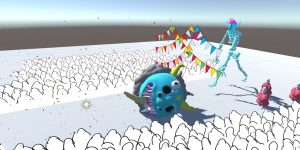
Exploring presence and time in lockdown
Jason Phu (AU), Josh Harle (AU)
"The Eternal Parade”, combines a world of mythological and fantasy creatures together in an endless parade of supernatural spirits. Exploring lockdown-appropriate, novel ways of making and presenting VR art, artist Jason Phu worked with Tactical Space Lab to create a perpetual, constantly-changing street scene via a 360 YouTube live-stream, accommodating anything from phones, TVs, or laptops, to various VR headsets to view in isolation or otherwise.
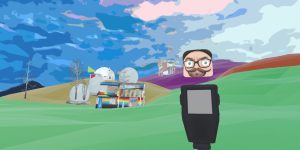
Exploring communities in out-moded utopias
Kylie Banyard (AU), Josh Harle (AU)
Extending from a body of work inspired by the history of Black Mountain College, an experimental avant-garde college in the mountains of North Carolina, artist Kylie Banyard worked with Tactical Space Lab to explore a model of ‘intentional’ community spaces within virtual reality. Initially attracted to Mozilla Hubs for its broad accessibility, Hubs aptly echoed the same idealistic, almost utopian themes of communal, alternative living at the heart of BMC, Freetown Christiania and others.
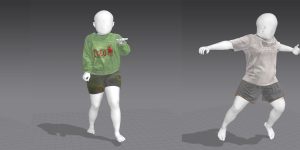
Recomposing histories through VR
Claudia Nicholson (AU), Josh Harle (AU)
Claudia Nicholson’s paintings reconfigure colonial depictions of first contact in the Americas, embedding the work with folklore and personal histories in a bid to disrupt colonial narratives. Landscapes are rearranged to leak into each other, to conflate time, myth and ecologies.
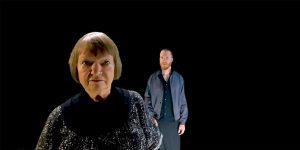
Being within the story
John Gillies (AU)
A virtual experience of uncertainty, intangibility, and off-kilter interpersonal connections. Developed through experimental collaboration at Tactical Space Lab, making use of 180-degree stereo footage in a 6dof virtual space, and experienced within a theatrical physical staging, the work makes use of a rich landscape of spatialized sound to create a sense of shared presence.

Reconciling conflict in imaginary places
Louise Zhang (AU), Josh Harle (AU)
Working in collaboration with Tactical Space Lab, the work invites the audience to visit the "Mei guanxi" temple as a place not dictated by a single narrative, but of multitudes and acceptance, and inhabited by a selection of Zhang's sculptural works that have been scanned, modelled, and simulated using HoudiniFX to imbue them with life and motion.

On the symbolic power of architectural form
Tarik Ahlip (AU), Josh Harle (AU)
This project extends Tarik Ahlip’s study of sculptural form as a medium for exploring ontologies and socialised ideals of nature. Drawing on his background in architecture and interest in film, Ahlip’s worked with Tactical Space Lab to explore the figurative dimensions in sculpture within a cinematic composition of scenes in VR.
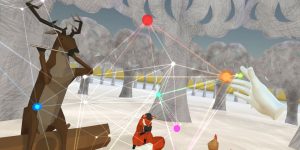
The music between chaos and control
Nic Cassey (AU), Josh Harle (AU)
Riffing on discussions around improvised performance, musician Nic Cassey worked with Tactical Space Lab to create a generative ‘instrument’ in VR, both played by and in collaboration with the VR participant. Combining elements of a mandala-inspired, hand-drawn style with a unique system for creating generative music, the work explored the tension at play between chaos (change) and order (the static) at play in improv music and other generative systems, manifested as the tension between harmony and dissonance, progression and development of the music.
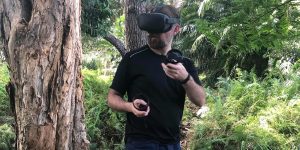
On eco-sensuality with untethered VR
Grace Kingston (AU), Josh Harle (AU)
Artist Grace Kingston’s work with Tactical Space Lab explored themes of artifice and facade vs nourishment and connection in our digitally-mediated evocations of the natural world, making use of the stand-alone capabilities and hand-tracking of the Oculus Quest to create a site-specific VR work that maps to the natural landscape and features it’s experienced in.
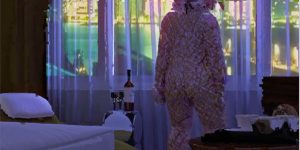
Daata presents Eva Papamargariti
Daata (UK)
Eva Papamargariti's work explores the relationship and construction of the limits between virtual space and material reality, as well as the dynamic dissolution that takes place on the verge of these two “ecosystems.” Her practice delves into issues and themes related to simultaneity, the merging of our surroundings with the virtual, the constant diffusion of fabricated synthetic images that define and fragment our identity as well as the symbiotic procedures and entanglement that take place between humans, nature and technology.
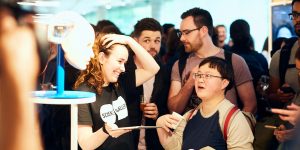
THE INVISIBLE REMAINS OF CARROWKEEL
An exploration of ancient genetics and the history of neolithic tombs as featured in NATURE in June 2020 by Trinity College Dublin geneticist Lara Cassidy (IE)
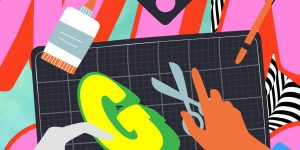
HOLD ON TO THE GOOD THINGS, IMAGINE THE BEST THINGS
An opportunity to reflect on COVID-19 and its effects on society, and speculate on what comes next. What roles do science, technology and art play here?

Tapatia-Tech-ila- Rhapsody
Paris Alejandro Díaz Miranda (MX)
Tapatía Tech-ila Rhapsody is an audiovisual piece based in Mexican culture and the current accelerated life rhythm; that presents a triad of conceptual frameworks: Past+Present+Future of humanity; Art+Technology+Science as means to re-shape our destiny; and Classical+Folkloric+Contemporary musical identity of a culture/country/society.
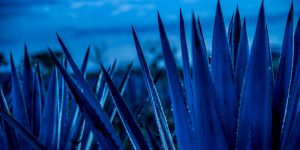
Reset-Tech-ila Summit
Secretaría de Innovación, Ciencia y Tecnología del Estado de Jalisco, Majo Castelazo Andre
The agricultural regions are presenting problems to enter the digital reality; at the level of tourism, for the transmission of knowledge and interactivity in a non-physical way, at the same time they represent the change of mentality towards a sustainable and future production.

Tech-ila Master Craftsman
Oficina de Visitante y Convenciones (OFVC), Cámara Nacional de la Industria del Tequila (CNIT), Zonaga and Mad Machina
The master class is an approach to the materials, hands and stories behind each Tequila Máster "artisan", a product made by years of history and essence accompanied by new technological resources that will make understanding the future of How do we produce, transmit and collect culture? How do we create ancestral products for the future? How do we mold our worldview into an object?
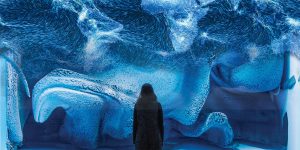
DïaloG Livestream
Refik Anadol (TR) and Maurice Benayoun (FR)
DïaloG is an urban media art installation developed by Maurice Benayoun (MoBen/CityU HK) and Refik Anadol: In the public space (L’Hospitalet de Llobregat, Spain) two “living” entities face each other. They don’t look like the living beings we know. They don’t speak any language we know. They are aliens, strangers, immigrants. Facing each other they gradually mutate.

DïaloG
Refik Anadol (TR) and Maurice Benayoun (FR)
DïaloG is an urban media art installation developed by Maurice Benayoun (MoBen/CityU HK) and Refik Anadol: In the public space (L’Hospitalet de Llobregat, Spain) two “living” entities face each other. They don’t look like the living beings we know. They don’t speak any language we know. They are aliens, strangers, immigrants. Facing each other they gradually mutate.

MindSpaces platform
Centre for Research and Technology Hellas (CERTH) (GR), Maastricht University (NL)
The MindSpaces platform, encompassing the technologies of the project, will be demonstrated, showing how to design solutions for both indoor and outdoor environments using data from emotional, behavioral and discourse analysis.

MindSpaces Residency Artists
Haseeb Ahmed (US), Sarah Derat (FR), Emanuel Gollob (AT), Emmanuel Van der Auwera (BE), João Martinho Moura (PT), Michael Sedbon (FR)
These interviews will discuss the work of the artists throughout their MindSpaces residency. They will present their work so far and their collaboration with the technical partners of the MindSpaces consortium.

Citizens' Think-in on Artificial Intelligence
Artificial Intelligence (AI) is playing a growing role in our lives. Machine learning tools help determine the ads you see online, the news you read and the products you purchase. Every time we send a text, use a credit card or sync a wearable device we are sharing personal information about ourselves. But what are the social consequences of AI? How is our information being used? Who is setting the policies and regulation? And how can AI affect our privacy and civil liberties?


